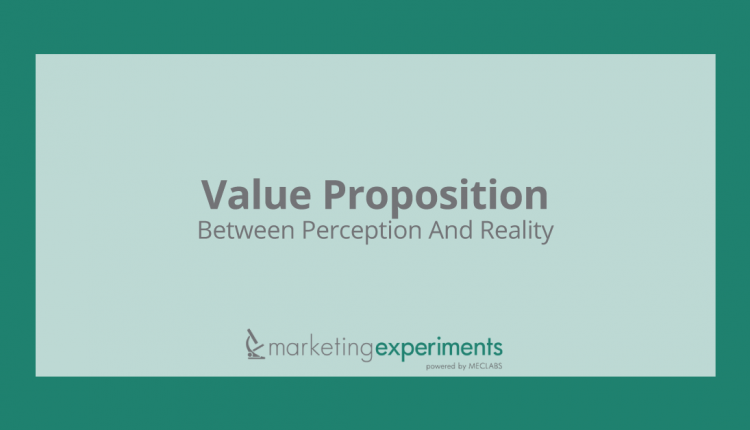I recently posted this observation on FlintsNotes, Flint McGlaughlin’s blog designed to showcase his day-to-day work, and I felt that this idea could be elaborated on more:
The challenge for many companies is misunderstood. It is not finding prospects that need what it has to offer, but rather finding prospects who know that they need what it has to offer.
Managers flounder in the gap between perception and reality. They are trained to think about data, facts and rules. This strength obscures a corresponding weakness: They fail to account for the difference between ‘what is’ and ‘what the prospect believes is.’ The latter initiates the experience of the former and thus takes initial precedence.
-Flint McGlaughlin, Managing Director, MECLABS
The difference between reality and perception
Fint talks about how managers (marketers) tend to get lost in the blurred line of perception and reality, failing to recognize the difference between “what is” (reality) and “what the prospect believes is” (perception).
He points out that the latter (perception) initiates the experience of the former (reality), thus taking initial precedence.
When a prospect first comes in contact with a business, a brand or product, what is the initial perception, and how much impact does that have? I have seen this behavior demonstrated in many email campaigns, where a simple line of copy explaining the value of a decision or product can have a significant impact on lower funnel (closest point to the desired goal or action) conversion and purchase rates.
What shapes the initial perception that a prospect may have, and how do we, as marketers, identify and maximize this force?
I will pose the answer to this question with another question: “If I am your ideal customer, why should I buy from you rather than any of your competitors?”
That answer will shape a company’s value proposition, which is the main driver behind a prospect’s perception.
The 19th century German philosopher Hegel said, “Passions, private aims and the satisfaction of selfish desires are … the most effective springs of action.”
As marketers, we must focus on answering this question with a particular expression around the “private aims” of the prospect. We must focus on our prospect’s desires to craft an effective message that will impact their perception of our offer. Only then will “what the prospect believes is” will align with “what is.”
You might also like
Value Proposition: How to turn a shiny new value proposition into a high-performing page [MarketingSherpa webinar replay]
Marketing Optimization: 4 steps to discovering your value proposition and boosting conversions [More from the blogs]
Value Proposition: 4 questions every marketer should ask about value prop [More from the blogs]
3 Factors that Connect Value Prop to Prospects [More from the blogs]



